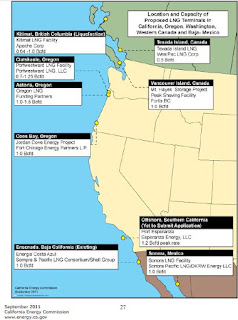OUCH, what a Title, but that search on Google, garnered a lot of hits, 14,300 in 0.65 seconds.
This morning I was down at the Vancouver Archives, adjacent to the Vancouver Planetarium, where the latter is Pay parking, the first has FREE parking, as long as you're doing business at the Archives, researching.
Vancouver Maritime and its Library, is a block away, where their parking is PAY, unless you park wayyyyyy to the West, adjacent to Kitsilano Park, and do it on the street, seaside of the block. Everything else is Windshield Displayed Permit Only.
"How Vancouver Grows!" 1934 is from the "Sun Directories", there's a multitude of other Directories of Greater Vancouver available at the Vancouver Archives. There's also a newspaper clipping section where the data is cross-referenced on the old, and I mean OLD catalogue system (library style) where they are then linked to a Micro-fiche database, TONS of them, AND, if the micro-fiche is not good enough, then the ORIGINALS are in the cavern, neatly glued to a cardboard backer, and only accessible by the staff, ........ for you.
The Archives "bunker" green roof is undergoing a major refit that covers the cavern that holds all of their records. The Reading Room, where the open data work is done, where you can really spread all of the information out, has two computers for accessing their website AND free internet for those who have their laptops with them, as long as you're researching. No coffee (liquid) or food permitted, at any time for visitors. Plus, or maybe its a minus today, the HEAT was off in the Reading Room, something to do with the Re-construction. There's Four Micro-fiche readers, spooler capabilities too, along with what appears to be a digitizer hook up.
*************************
Assistance by the Staff, phenomenal! but leave your back packs and other sundry items in the open storage racks or the lockable variety. There's also a Gallery area for OLD photos, which, while I was there, was being rearranged by two staffers.
**************************
I took one look at this particular page of the Directory and was amazed at how the population in Greater Vancouver didn't "spike" altogether, Vancouver did though in 1912 - 122,100, the year before (1911) it was 100,409, so I asked myself, or rather I asked Google....."what happened in 1912 that drove the population higher" and realized that I had to refine my search to "
what happened in 1912 that drove the Canadian population higher" and found well over 8 million hits. The Fourth hit down caught my attention....
5. The Immigration Boom 1895-1914 - Canadian History Portal - HCO
 |
| From the Sun Directories 1934 |
|
|
Before going to the "Immigration Boom" link, I went here which is the photo below, to reinforce my suspicion that Greater Vancouver, that is Vancouver, South Vancouver and Point Grey, did have a spike in its population... I was half right...... Vancouver alone had the spike, the three "municipalities" weren't amalgamated until January 1, 1929.
The link to the "Immigration Boom" suggests that the Brits weren't sturdy enough to withstand the cold weather of Canada, and that they either went back to the old country, or went South, to the United Stated of America.
But what caused the "spike", again from the "Immigration Boom", it was someone called Clifford Sifton,
Laurier's Minister of the Interior. He was a "PULL FACTOR"
NOTE: whoever wrote the information on Clifford Sifton, goofed, just a touch:
"Clifford Sifton
However, perhaps the most significant pull factor was
Clifton Sifton,...."
Clifton Sifton????
Initially, Sifton and his agents sought immigrants from the British Isles, thinking that they would have the least problem adapting and also brought the additional advantage of helping to distinguish Canada from its southern neighbour. That strategy proved to be unsuccessful as many of the British immigrants found life too difficult in Canada, and many left to return home or migrated south to the U.S.
Sifton therefore changed his thinking. British immigrants had proven not to be ideal. He desperately wanted immigrants with farming experience who also had some familiarity with the rough climate on Canada's Prairies. His new ideal immigrant was best captured in his own words. 'I think a stalwart peasant in sheepskin coat, born on the soil whose forefathers have been farmers for ten generations, with a stout wife and a half a dozen children, is good quality.'
As a footnote here, its Sir John A's 197th birthday today, he was our First and our Third Prime Minister and in recognition of him, the Federal Government renamed the Bank of Montreal building across from Parliament Hill ........
--------------------
2025-10-28 updated:
AI Overview
The population grew in 1912 due to the long-term effects of the Industrial Revolution, which lowered death rates through improved public health, sanitation, and a more regular food supply. While 1912 itself had specific events like the Canadian census showing a significant increase, the underlying population growth was a sustained trend driven by factors like industrialization in Europe, which created large urban populations, and continued immigration in North America, a major driver of population increase in the United States and Canada.
Industrial Revolution and public health: Advances in industrialization, medical knowledge, and public health were drastically reducing death rates, leading to a population boom that started in earlier decades and continued.
Urbanization: Industrialization transformed cities into hubs with large populations of factory workers, artisans, and a growing middle class.
Immigration: High levels of immigration into countries like the United States and Canada, a significant contributor to population growth in these regions, continued in 1912.
Agricultural improvements: A more consistent and regular food supply resulting from technological advancements in agriculture also contributed to population growth by supporting a larger population.





